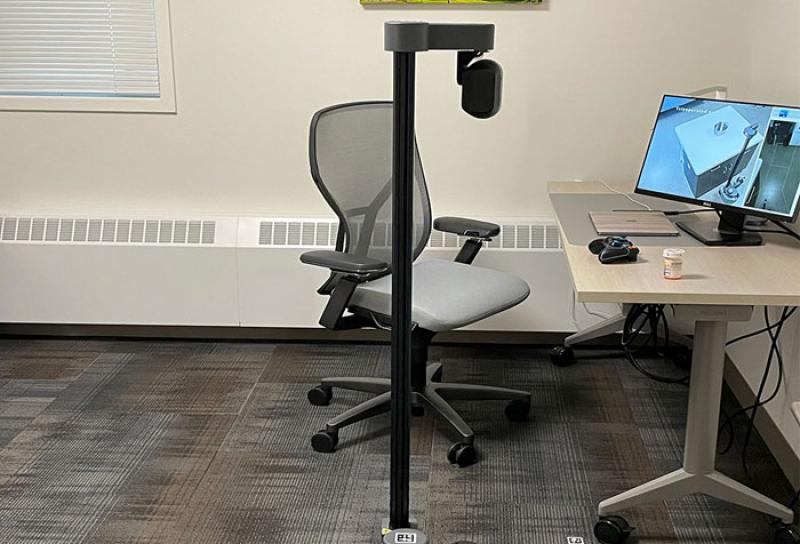
It’s Not A Stretch To See Future Opportunities for this Robot
Kinesiology and Community Health Professor Wendy Rogers is no stranger to robots.
She began working with robots more than two decades ago at the Georgia Institute of Technology, where she was a professor in the School of Psychology, and director of the Human Factors & Aging Laboratory. It was at Georgia Tech where Rogers connected with Professor Charlie Kemp, director of the Healthcare Robotics Lab at Georgia Tech.
Now the two are collaborating on a robot that can help people age in place, a vital part of Rogers’ research agenda.
Rogers and her collaborators, which include Dr. Harshal Mahajan and Dr. Travis Kadylak from KCH, received a Phase I Small Business Innovation Research Grant from the National Institute on Aging—a division of the National Institutes of Health—for a project entitled, Stretching Their Reach: Robotic Support for Domestic Activities for Older Individuals with Mobility Limitations.
Rogers is the Principal Investigator for the University of Illinois, and Dr. Aaron Edsinger is the Principal Investigator for Hello Robot, the company he co-founded with Kemp. The grant amount is $256,064. The project involves the use of Stretch, a research robot designed for homes. The research will identify home tasks for which support is needed; develop tools to enable Stretch to effectively perform these tasks; and design an easy-to-use interface that older adults can use to control Stretch to carry out their desired tasks.
Developed by Kemp and Hello Robot co-founder Aaron Edsinger, former robotics director at Google, Stretch weighs about 50 pounds and costs less than $20,000. A robot resides at the McKechnie Family LIFE Home, which Rogers directs, where researchers are assessing how Stretch can support tasks around the home, investigating facilitators and barriers to usage, comparing different ways of controlling the robot, and determining the level of instructional support necessary to make it user friendly.
When Kemp and Edsinger created Stretch, it was immediately clear to them who they wanted to work with.
“Dr. Rogers was one of the first people Hello Robot spoke with when we were exploring viable research and commercial paths for Stretch,” Edsinger said. “Dr. Rogers and her team are doing incredible work to support the independence of people aging in place. We thought Stretch would be a great tool to advance her team’s research on robots as assistive devices.”
In fact, in a new course offered this semester at Illinois called Human-Robot Interaction in Community Health, Rogers is focusing on how robots can be used to improve health and well-being in populations with diverse needs and abilities.
Edsinger said the goal of the SBIR grant is to “demonstrate the feasibility of Stretch as an assistive device for older adults with mobility and cognitive impairments. We plan to obtain feedback from older adults and explore tasks and tools that could be beneficial. These will be valuable steps towards our long-term goal of assisting older adults with disabilities.”
Edsinger even sees potential commercial applications for Stretch.
“Stretch is intentionally designed to be used around people. We envision a future where Stretch is a platform that equips people to create a variety of businesses with mobile manipulators.”
One thing is certain; this collaboration between Hello Robot and Rogers is not the last.
“Hello Robot deeply respects the work Dr. Rogers and the Illinois team are doing to promote the independence of adults aging with physical and cognitive disabilities,” Edsinger said. “We hope that this is just the beginning of a long-standing collaboration to advance the usefulness of robots as assistive devices in people’s homes. “
